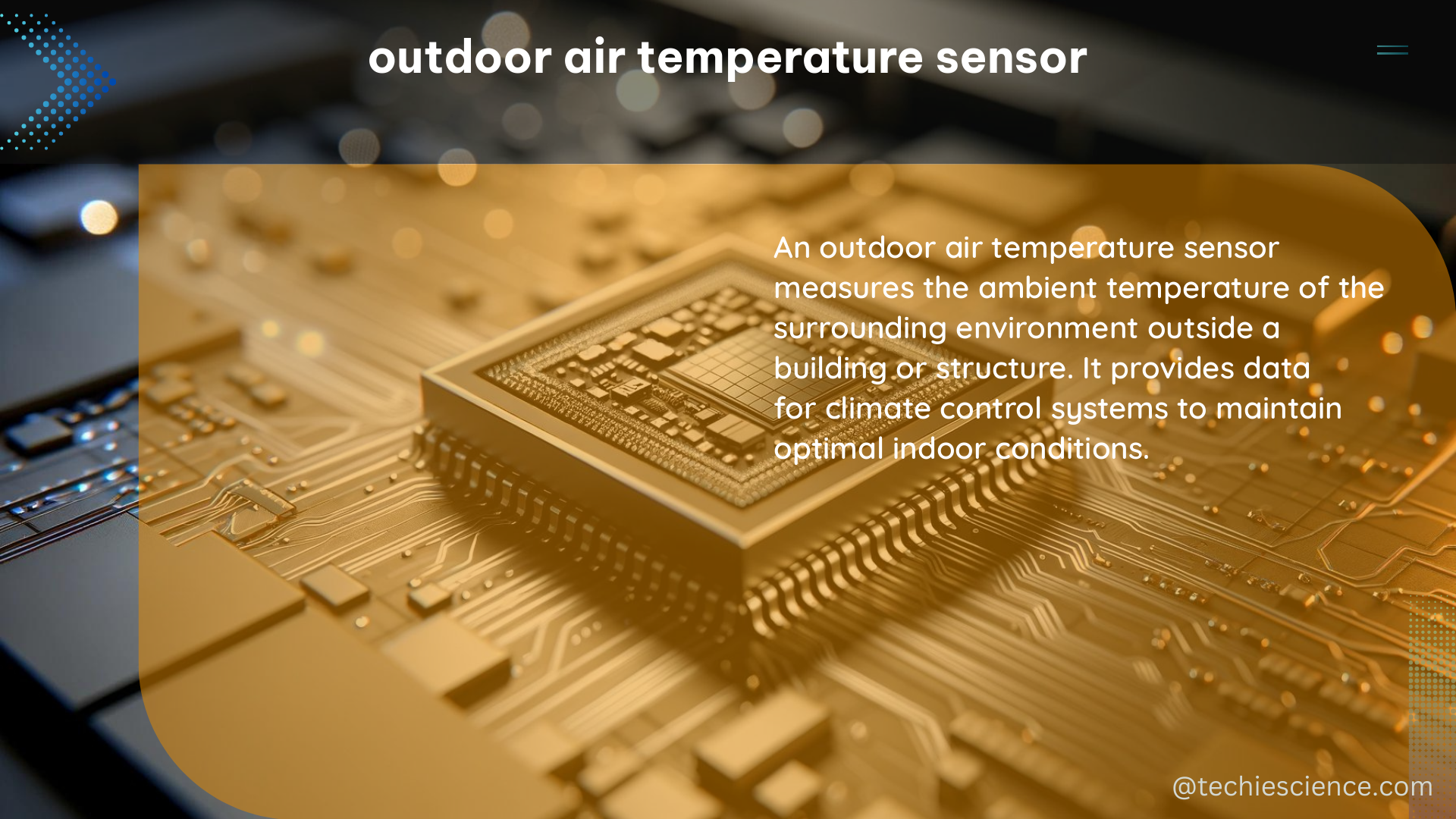The outdoor air temperature sensor is a crucial component in various systems, including HVAC systems, weather stations, and environmental monitoring networks. These sensors provide quantifiable data on outdoor air temperature, which is essential for ensuring indoor air quality, energy efficiency, and occupant comfort.
Understanding Outdoor Air Temperature Sensor Specifications
When selecting an outdoor air temperature sensor, several technical specifications should be considered to ensure optimal performance and reliability.
Accuracy
The accuracy of an outdoor air temperature sensor can range from ±0.1°C to ±2°C, depending on the sensor’s quality and price. High-precision sensors with ±0.1°C accuracy can cost significantly more than standard sensors with ±1°C accuracy. The choice of accuracy depends on the specific application and requirements.
Response Time
The response time of an outdoor air temperature sensor is the time it takes for the sensor to reach 63.2% of the total change in temperature. This can vary from seconds to minutes, depending on the sensor technology and design. Faster response times are generally preferred for applications that require rapid temperature monitoring, such as HVAC systems.
Measurement Range
The measurement range of outdoor air temperature sensors can typically cover temperatures from -50°C to +70°C or even wider, depending on the sensor type and design. Some specialized sensors may have an extended range to accommodate extreme weather conditions.
Environmental Durability
One critical aspect of outdoor air temperature sensors is their exposure to environmental factors, such as humidity, precipitation, and solar radiation. Selecting sensors with appropriate environmental protection, such as IP (Ingress Protection) ratings, is essential. For example, an IP65-rated sensor can withstand water jets from any direction and dust ingress, making it suitable for outdoor use.
Sensor Technologies for Outdoor Air Temperature Measurement

Several methods and technologies are available for measuring outdoor air temperature, each with its own advantages and disadvantages.
Thermocouples
Thermocouples are known for their fast response time and low cost but have lower accuracy than RTDs and thermistors. They are commonly used in applications where a quick response is more important than high precision, such as in HVAC systems.
Resistance Temperature Detectors (RTDs)
RTDs offer higher accuracy than thermocouples, typically ranging from ±0.1°C to ±0.5°C. However, they have slower response times and are generally more expensive. RTDs are often used in applications that require precise temperature monitoring, such as in weather stations and environmental monitoring networks.
Thermistors
Thermistors are another type of temperature sensor that provide high accuracy, typically ranging from ±0.1°C to ±0.5°C. They have a slower response time compared to thermocouples but are generally more cost-effective than RTDs. Thermistors are commonly used in a wide range of applications, including HVAC systems and weather monitoring.
Outdoor Environmental Monitoring Networks
In addition to temperature sensors, other sensors, such as humidity, pressure, and air quality sensors, are often used in outdoor environmental monitoring networks. These networks provide valuable data for various applications, including:
AirData Air Quality Monitors
The AirData Air Quality Monitors app, developed by the US Environmental Protection Agency (EPA), provides an interactive map of air quality monitors across the United States. These monitors measure various pollutants, such as CO, Pb, NO2, Ozone, PM10, PM2.5, and SO2. The app allows users to query and download daily and annual summary data, making it a valuable resource for environmental monitoring and research.
Sensor Placement and Considerations
When deploying outdoor environmental monitoring networks, the placement and installation of sensors are crucial factors to consider. Factors such as sensor height, proximity to obstructions, and exposure to environmental elements can significantly impact the accuracy and reliability of the collected data.
Conclusion
Outdoor air temperature sensors play a vital role in various systems and applications, providing quantifiable data on outdoor air temperature. When selecting an outdoor air temperature sensor, it is essential to consider technical specifications such as accuracy, response time, measurement range, and environmental durability. Understanding the different sensor technologies and their advantages and disadvantages can help you choose the most suitable sensor for your specific application.
Moreover, outdoor environmental monitoring networks, such as the AirData Air Quality Monitors app, offer valuable resources for environmental monitoring and research, providing a wealth of data on various environmental parameters, including air quality and temperature.
By understanding the key aspects of outdoor air temperature sensors and leveraging the resources available in environmental monitoring networks, you can ensure accurate and reliable temperature data, leading to improved indoor air quality, energy efficiency, and occupant comfort.
References:
– AirData Air Quality Monitors – US EPA
– Outdoor Air Temperature Sensor Accuracy and Response Time
– EBTRON – Outdoor Air Temperature Sensor Specifications

The lambdageeks.com Core SME Team is a group of experienced subject matter experts from diverse scientific and technical fields including Physics, Chemistry, Technology,Electronics & Electrical Engineering, Automotive, Mechanical Engineering. Our team collaborates to create high-quality, well-researched articles on a wide range of science and technology topics for the lambdageeks.com website.
All Our Senior SME are having more than 7 Years of experience in the respective fields . They are either Working Industry Professionals or assocaited With different Universities. Refer Our Authors Page to get to know About our Core SMEs.